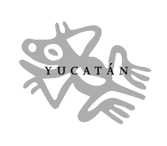MASA FANTASIES
Gordas, sopes, chalupas, quesadillas—enchanting names, but these are just a few of the masa fantasies, for wherever you travel in Mexico there are the specialties of that region—the garnachas of Yucatán and Veracruz, the panuchos of Yucatán and Campeche; the molotes of Oaxaca; bocoles of Tamaulipas; and the tlacoyos, memelas, picadas, and pelliscadas of central Mexico. They are all variations on a theme—corn dough flattened into little cakes, thick or thin, fried or toasted, some reddened with dried chiles, enriched with creamy cheese or marrow fat, stuffed with beans, or seasoned with dried shrimps. Some are topped with shredded meats or crumbled cheese, doused with a fiery sauce, and decorated abundantly with radish, tomato, or lettuce—or whatever is at hand. The corn dough is patted and coaxed into a hundred different little forms, enticing you to nibble from morning until night. These are just a few of the hundreds of variations on what the Mexicans call antojitos, “little whims.”
GARNACHAS YUCATECAS Filled Masa Tartlets
SEÑORA TRÁNSITA, QUINTA MARI, MÉRIDA
MAKES 12 GARNACHAS
Mix the masa together with the flour and salt.
Roll the masa into 12 balls, each roughly 1¾ inches (4.5 cm) in diameter.
Press each ball of dough onto a floured surface and make a well in it, using both thumbs together. Press out the sides of the well and mold the dough into a small basket shape about 3 inches (8 cm) across and ¾ inch (2 cm) deep. The dough should be about ¼ inch (.75 cm) thick.
Heat the fat in a large skillet and fry the garnachas, hollow side down first, until they are a pale gold and just a little crisp on the outside, 8 to 10 minutes. Drain the garnachas on the paper toweling and keep them warm.
Fill one half of each garnacha with a tablespoon of the bean paste and the other half with a scant tablespoon of the picadillo. Cover the filling with a large teaspoon of the tomato sauce and sprinkle it with the cheese.
Garnachas should be served as soon as possible after frying or they will become leathery. They can be prepared up to the point of frying some hours ahead, but they should be kept covered so that the masa does not dry out.
The picadillo, bean paste, and sauce will freeze perfectly well, so you could always keep some on hand and whip up some garnachas at the drop of a hat—a sort of Mexican pizza.
PICADILLO SENCILLO PARA GARNACHAS Ground Meat Filling for Garnachas
MAKES APPROXIMATELY 2 CUPS (500 ML)
1 TABLESPOON MELTED LARD OR VEGETABLE OIL
1 GARLIC CLOVE, FINELY CHOPPED
⅓ CUP (85 ML) FINELY CHOPPED WHITE ONION
2 CUPS (500 ML) FINELY CHOPPED TOMATOES
1 POUND (450 G) GROUND BEEF
SALT TO TASTE
Heat the fat in a large skillet and fry the garlic and onion until translucent.
Add the tomatoes and fry over fairly high heat until reduced—about 3 minutes. Stir in the meat with salt to taste and cook over medium heat, stirring from time to time, until cooked—about 10 minutes. The mixture should be moist but not juicy.
GARNACHAS VERACRUZANOS DE MASA COCIDA Garnachas of Cooked Masa
SEÑORA OCHOA DE ZAMUDIO
MAKES 16 2½-INCH (6.5-CM) GARNACHAS
These garnachas made of an unusual, cooked masa are sold along the waterfront of Alvarado, Veracruz, in the evenings. Señora Ochoa de Zamudio, who was born in Alvarado, prepared them for me, working the masa with her hands. When prepared and ready to serve, the bottom of the garnacha will be slightly browned and firm while the rest is still soft. Like all antojitos of this kind, they are addictive!
1 POUND (450 G) TORTILLA MASA
SALT TO TASTE
2 HEAPED TABLESPOONS LARD
LARD OR VEGETABLE OIL FOR FRYING
⅔ CUP (165 ML) FRIJOLES REFRITOS A LA VERACRUZANA
12 OUNCES (340 G) WAXY POTATOES, COOKED, PEELED, AND DICED (ABOUT 2¼ CUPS/563 ML)
⅔ CUP (165 ML) SALSA DE JITOMATE VERACRUZANA
½ CUP (125 ML) FINELY CHOPPED WHITE ONION
½ CUP (125 ML) FINELY GRATED COTIJA OR ROMANO CHEESE
Work the masa and salt together until very smooth, either by hand or in the food processor, adding a little water if the masa is rather dry. Divide the dough into three parts and form into round, flat cakes about ½ inch (1.5 cm) thick and cover with a damp cloth until ready to cook.
Choose a pot that is about 8 inches (20 cm) in diameter and fill with water to the depth of about 5 inches (13 cm). Bring to a boil over medium heat. Lower the heat slightly so that the water is not boiling so fiercely and add one piece of the masa. It will sink to the bottom but after a minute shake the pan gently to ensure that the masa is not sticking to the bottom. If it is, gently loosen it with a wide spatula. Continue cooking the masa cake until it floats to the surface of the water—about 4 minutes—then turn it over and cook on the second side for about 2 minutes more. Drain and set aside. Continue with the other two masa cakes. Transfer the cakes to the bowl of a food processor with the lard and process until you have a very smooth, cohesive dough. (This process was done by hand with movements like the fraisage for a pastry dough, working the cooked dough and lard together hard three times.)
Put a shallow layer of lard or oil in a large skillet and melt over medium heat. Divide the dough into 1¼-inch (3.25-cm) balls and cover them with a damp cloth. Press one of the balls out to about 2½ inches (6.5 cm) in diameter. Form a small ridge around the circumference and place in the hot fat. Continue with the rest. From time to time flip some of the hot fat into the garnacha. While it is still in the pan, spread a heaped teaspoonful of the bean paste inside the garnacha, add a few cubes of potato and 1½ teaspoons of the sauce, and continue frying until the dough is slightly browned on the bottom. Top with a little of the onion and cheese and serve immediately.
ENCHILADAS DEL SANTUARIO Sanctuary Enchiladas
MAKES 12 ENCHILADAS
I remember so clearly those lovely balmy evenings in San Luis Potosí in the early seventies. It seemed that every family was out ambling along the long paseo lined with fragrant trees which led to the santuario. From way off you could see the blinking specks of light from candles set up in the little food stands at the foot of the steps leading to the church. Most were serving the specialty of San Luis, Enchiladas del Santuario. They were not enchiladas in the general sense, more like quesadillas made with a reddish masa and filled with cheese and onion: they were so simple but delicious. The cheese I remember was one of the most delicious quesos fresco I have ever tasted, made by a local factory called Carranco.
1 TABLESPOON LARD
1 ANCHO CHILE, WIPED CLEAN, SEEDS AND VEINS REMOVED
⅓ CUP (85 ML) WATER
2 PEPPERCORNS, CRUSHED
SALT TO TASTE
10 OUNCES (285 G) TORTILLA MASA (SCANT 1¼ CUPS/313 ML), FAIRLY DRY
4 OUNCES (115 G) QUESO FRESCO, CRUMBLED (ABOUT ¾ CUP/188 ML)
MELTED LARD OR VEGETABLE OIL FOR FRYING
⅓ CUP (85 ML) FINELY GRATED QUESO SECO OR ROMANO
⅓ CUP (85 ML) FINELY CHOPPED ONION
Heat the lard and fry the chile lightly on both sides, then remove with a slotted spoon, and tear into pieces. Put the chile pieces in a blender, add the water, peppercorns, and salt, and blend until smooth.
Mix the ground chile into the masa and knead the dough well. Set it aside—do not refrigerate—to season for ½ hour.
Divide the dough into 12 portions and roll each into a ball about 1¼ inches (3.25 cm) in diameter. Press a ball of the dough out in a tortilla press to make a slightly thicker tortilla about 4½ inches (11.5 cm) in diameter. Put 1 scant tablespoon of queso fresco on one half of the dough, then fold the second half over to cover the cheese, pressing the edges firmly together. Cook on a comal or griddle over medium heat for about 2 minutes, turn it over, and cook on the second side for another 2 minutes. Continue with the rest of the masa balls.
Heat the fat, about ¼ inch (.75 cm) deep, in a frying pan, and fry the enchiladas lightly on both sides—they should not be crisp—for about 1½ minutes on each side. Drain on paper toweling and serve immediately with the cheese and onion.
Like all masa antojitos they are best eaten the moment they are made, but if you have to make some ahead, cook them on the comal, wrap in a thick cloth, and do the frying at the last moment.
BOCOLES DE FRIJOL Masa and Black Bean Snacks
SEÑORA HORTENSIA DE FAGOAGA
MAKES 12 BOCOLES—2½ INCHES (6.5 CM) TO 3 INCHES (8 CM) IN DIAMETER, AND JUST OVER ¼ INCH (.75 CM) THICK
The mixture of masa and black beans for antojitos is not unique to this area; there are the gorditas de frijol from Veracruz (see recipe in My Mexico), negritos from Campeche, and even some unusual totopos from the Isthmus among others, not to mention the many tamales incorporating beans and masa. It is a happy marriage!
These bocoles resemble gorditas in size and shape, but they are briefly submerged in a hot tomato sauce and therefore slightly softer on the outside. They are served with a little of the sauce and topped with very finely grated queso añejo and finely chopped onion. They make for a delicious, albeit slightly caloric, snack.
1½ CUPS (375 ML) TORTILLA MASA, AS DRY AS POSSIBLE
1 CUP (250 ML) BLACK BEAN PASTE
4 TABLESPOONS LARD
½ TEASPOON BAKING POWDER
SALT TO TASTE
2 CUPS (500 ML) SALSA RANCHERA, OMITTING THE ONION, DILUTED WITH ABOUT ⅔ CUP (165 ML) MEAT OR CHICKEN BROTH
⅓ CUP (85 ML) FINELY GRATED QUESO AÑEJO
⅓ CUP (85 ML) FINELY CHOPPED WHITE ONION
Mix the masa with the bean paste, lard, baking powder, and salt. Divide into 12 equal balls about 1¾ inches (about 4.5 cm) in diameter. Press each ball into a disk about 3½ inches (9 cm) in diameter and just over ¼ inch (.75 cm) thick.
Heat the comal, then lower the heat and cook the bocoles for about 6 minutes on each side. Meanwhile, warm the tomato sauce. While the bocoles are still warm, immerse them in the warm tomato sauce, then serve with a little of the sauce and sprinkle with a little of the cheese and chopped onion.
These are best eaten immediately—even if you do burn your mouth. By adding more lard they can be reheated even a day later.
GORDITAS DE CHILES SERRANOS Cakes of Masa With Serrano Chiles
SEÑORA HORTENSIA DE FAGOAGA
MAKES 12 GORDITAS—3 INCHES (8 CM) IN DIAMETER AND JUST OVER ¼ INCH (.75 CM) THICK
These little masa antojitos are called either gorditas or itacates. The word itacate comes from the Náhuatl, denoting provisions or food taken on a journey or to the fields.
This particular recipe is from the Sierra de Puebla and was given to me by my never-failing source of information for recipes of that area, Señora Hortensia de Fagoaga. Many recipes of hers appear in The Art of Mexican Cooking for this type of delectable masa concoctions or antojitos. They are eaten like bread, either alone or to accompany an egg or rice dish.
These simple foods rely on a very good quality masa and, of course, pork lard or, more delicious still, rendered beef fat—as do the very similar bocoles of the Tampico area.
When cooking these itacates on either a metal or a clay comal, I like to spread a thin coating of cal (lime) over the surface to prevent the masa from sticking. They should be cooked slowly so that the heat penetrates the thick dough. The gorditas should be slightly crisp on the outside but soft inside.
2 CUPS (500 ML) TORTILLA MASA (ABOUT 18 OUNCES/510 G)
3 TABLESPOONS PORK LARD, SOFTENED
SALT TO TASTE
4 SERRANO CHILES ASADOS, OR MORE TO TASTE
Mix the masa with the lard and salt. Roughly chop the chiles and crush to a textured paste. Mix the chiles into the masa well. Divide the dough into balls about 1¾ inches (about 4.5 cm) in diameter. Press each ball into a disk about 3 inches (8 cm) in diameter and just over ¼ inch (.75 cm) thick.
Heat the comal, then lower the heat and cook the itacates (see note) for about 6 minutes on each side.
These are best eaten immediately—even if you do burn your mouth. By adding more lard they can be reheated even a day later.
CHALUPAS
MAKES 12 CHALUPAS
Because of its narrow elongated shape this little antojito was named chalupa after the narrow canoes that navigated the waterways between the chinampas, or floating gardens, of Xochimilco—presumably since pre-Columbian times. But nobody can give me an explanation of why in Puebla and around Chilpancingo, Guerrero, the chalupas are round!
A favorite topping for these chalupas is some shredded, poached chicken and a little green sauce, sprinkled with finely chopped onion and crumbled queso fresco.
12 OUNCES (340 G) TORTILLA MASA (ABOUT 1⅓ CUPS/233 ML)
MELTED LARD OR VEGETABLE OIL FOR FRYING (OPTIONAL)
1 CUP (250 ML) SHREDDED, POACHED CHICKEN
¾ CUP (188 ML) SALSA DE TOMATE VERDE
½ CUP (125 ML) FINELY CHOPPED WHITE ONION
½ CUP (125 ML) CRUMBLED QUESO FRESCO
Work the masa with your hands until perfectly smooth—it should be soft and pliable—and divide into 12 separate balls. Form one piece of the dough into a sausage shape about 3½ inches (9 cm) long and ½ inch (1.5 cm) wide and press out lightly in a lined tortilla press to an oval shape slightly thicker than a tortilla.
Cook the chalupa on an ungreased comal until firm on the bottom, about 2 minutes. Turn the chalupa over and cook on the second side for about 1 minute, pressing up the sides of the dough to form a small ridge around the edge.
Spread the top with some of the shredded chicken, cover with the sauce, and sprinkle with the onion and cheese.
Optional—immerse the chalupas in hot, melted lard or vegetable oil for a few seconds and serve immediately: this is pan-to-mouth food.
QUESADILLAS
MAKES 12 QUESADILLAS
Quesadillas are one of the Mexicans’ favorite simple snacks. These uncooked tortillas are stuffed with one of various fillings and folded over to make a turnover. They are then toasted on a hot griddle or fried until golden. Only too often they are just a cooked tortilla filled with strips of Chihuahua cheese, which melts and “strings” nicely—a Mexican requirement. In central Mexico the simplest ones are filled with some of the braided Oaxaca cheese, a few fresh leaves of epazote, and strips of peeled poblano chile. Potato and chorizo filling—the one used for tacos—is also a favorite version, while the most highly esteemed of all are those of sautéed squash blossoms (flor de calabaza) or the ambrosial fungus that grows on the corn (cuitlacoche), both of which are at their best during the rainy months of summer and early fall. I have tried quesadillas with a delicious filling of brains in Morelia and I remember one of our maids making them with cooked potato peelings and a few epazote leaves—they were delicious.
1⅓ ROUNDED CUPS (335 ML) TORTILLA MASA (ABOUT 12 OUNCES/340 G)
MELTED LARD OR VEGETABLE OIL FOR FRYING
Preheat a lightly greased griddle.
Divide the dough into 12 equal parts and roll into balls about 1½ inches (4 cm) in diameter. Using the tortilla press and plastic bags (see How to Make Corn Tortillas) press out a ball of dough to make a tortilla 3½ to 4 inches (9 to 10 cm) in diameter. Peel off the top bag. Lift up the bottom bag and place it flat on your hand with the dough on the palm. Put a little of the filling onto one half of the dough, not too near the edge. Bring the bag up and over so that the other half of the dough doubles over and covers the filling. Press the edges of the dough gently together and then gently peel the bag from the “turnover.” Place it onto the griddle and cook for 3 to 4 minutes on each side, then stand it up so that the U-shaped fold is also cooked. (Take care that the griddle is not too hot or the dough will be burned on the outside without cooking through sufficiently; it should be thoroughly opaque and speckled with brown.)
Or cook them as follows: Heat the lard and fry the quesadillas for 2 to 3 minutes on each side, or until they are golden brown but not too dry and crisp. Drain and serve immediately.
NOTE: Quesadillas should be served immediately after they are cooked or they will soon become leathery. They could be formed ahead of time and kept wrapped in a slightly damp cloth or a piece of plastic wrap so they do not dry out.
SESOS PARA QUESADILLAS Brains Filling for Quesadillas
ENOUGH FOR 12 QUESADILLAS
12 OUNCES (340 G) CALVES’ BRAINS
SALT TO TASTE
2 TABLESPOONS MILD WHITE VINEGAR
3 TABLESPOONS VEGETABLE OIL
1 TABLESPOON FINELY CHOPPED WHITE ONION
1 GARLIC CLOVE, FINELY CHOPPED
8 OUNCES (225 G) TOMATOES, FINELY CHOPPED (ABOUT 1⅓ CUPS/335 ML)
2 SERRANO CHILES, FINELY CHOPPED
SALT TO TASTE
1 HEAPED TABLESPOON CHOPPED EPAZOTE
Cover the brains with cold water and leave them to soak for at least 4 hours. Change the water frequently.
Rinse the brains carefully in warm water to remove all traces of blood.
Bring the water to a simmer in a small pan; add the salt, vinegar, and brains—the water should cover the brains completely—and poach for 15 minutes but do not let the water boil on any account. It should just shudder. Let the brains cool in the liquid.
Drain the brains and remove the outer membrane; chop roughly.
Heat the oil and cook the onion and garlic over medium heat until translucent, about 1 minute.
Add the tomatoes and let cook over medium heat for about 3 minutes.
Add the brains, chiles, and salt and continue cooking until the brains are well seasoned and the mixture almost dry—about 5 minutes, stirring in the epazote after about 3 minutes.
FLOR DE CALABAZA GUISADA Squash Flower Filling
ENOUGH FOR 12 QUESADILLAS, ABOUT 1½ CUPS (375 ML)
2 TABLESPOONS VEGETABLE OIL
3 TABLESPOONS FINELY CHOPPED WHITE ONION
1 GARLIC CLOVE, FINELY CHOPPED
2 POBLANO CHILES, CHARRED, PEELED, SEEDS REMOVED, AND CUT INTO NARROW STRIPS
1¼ POUNDS (565 G) SQUASH FLOWERS, CLEANED AND ROUGHLY CHOPPED (ABOUT 9 CUPS/2.25 L;)
SALT TO TASTE
1 TABLESPOON ROUGHLY CHOPPED EPAZOTE
Heat the oil in a large frying pan, add the onion and garlic, and cook over medium heat until translucent—about 1 minute. Add the chile strips and cook for about 2 minutes. Stir in the flowers and salt, cover the pan, and cook over medium heat, stirring from time to time until the bulbous base of the flower is tender—about 10 minutes. If the flowers are rather dry, add a little water, if they are very juicy, remove the lid to reduce a little. The mixture should be moist but not juicy. Stir in the epazote and cook for 3 minutes more.
VARIATION: Substitute 12 ounces (340 g), weighed when cut from the ears, cuitlacoche (about 3 cups/750 ml) for the squash flowers. Follow the method above, cooking the cuitlacoche until tender but not soft—about 15 minutes.
CHORIZO CON PAPA Chorizo and Potato Filling
MAKES 2 ROUNDED CUPS (500 ML) FILLING FOR 12 QUESADILLAS OR TOPPING FOR 12 TO 15 SOPES, DEPENDING ON SIZE
If you want, you can peel the potatoes for this filling. I never do.
3 CHORIZOS, ABOUT 6 OUNCES (180 G)
8 OUNCES (225 G) WAXY POTATOES, COOKED AND CUT INTO SMALL CUBES (ABOUT 1½ CUPS/375 ML)
2 CANNED CHIPOTLES EN ADOBO, OR MORE TO TASTE, ROUGHLY CHOPPED
SALT TO TASTE
Remove the skin from the chorizos and crumble into a small skillet. Cook over low heat until the fat renders, taking care not to let them burn—about 5 minutes. If they are very greasy, drain off all but 3 tablespoons of the fat. Add the potatoes, chiles, and salt. Cook over medium heat, stirring from time to time, until the potatoes just begin to brown—about 8 minutes.
GREEN CHILE GORDAS
BASED ON A RECIPE BY SEÑORA JOSEFINA VELÁZQUEZ DE LEÓN
MAKES 12 GORDAS
12 DRIED TORTILLAS
3 FRESH CHILE VERDE DEL NORTE (ANAHEIM), CHARRED AND PEELED
⅔ CUP (165 ML) HOT MILK
SALT TO TASTE
1 TABLESPOON MELTED LARD
APPROXIMATELY ¼ CUP (65 ML) MILK, IF NECESSARY
MELTED LARD OR VEGETABLE OIL FOR FRYING
1½ CUPS (375 ML) PREPARED SOUR CREAM
1¼ CUPS (315 ML) FINELY CHOPPED WHITE ONION
Break the tortillas into small pieces and blend until they are reduced to the texture of fine bread crumbs. Transfer to a mixing bowl.
Blend the chiles, including their seeds, and the milk until smooth. Add the chile mixture, salt, and lard to the ground tortillas and knead the mixture well. Set aside, covered, for at least 2 hours to soften. Knead well again, then divide the dough into 12 equal portions. If the dough is crumbly, then add about ¼ cup (65 ml) more milk.
Roll the dough into balls—they should be about 1½ inches (4 cm) in diameter. Flatten them to form small cakes about 2 inches (5 cm) in diameter and ¼ inch (1 cm) thick.
Heat the lard in a large skillet over high heat, then lower the heat and let it cool a little. Fry the cakes gently, a few at a time, for 3 to 5 minutes on each side. Drain well and serve immediately, topped with the sour cream and onion.
I do not recommend freezing this masa.
POTATO AND MASA GORDAS
BASED ON A RECIPE BY SEÑORA JOSEFINA VELÁZQUEZ DE LEÓN
MAKES 12 GORDAS
1⅓ ROUNDED CUPS (335 ML) TORTILLA MASA (ABOUT 12 OUNCES/340 G)
⅓ CUP (85 ML) FINELY GRATED QUESO AÑEJO
¾ TEASPOON BAKING POWDER
SALT TO TASTE
4 SMALL POTATOES (ABOUT 12 OUNCES/340 G), COOKED, PEELED, AND ROUGHLY MASHED
VEGETABLE OIL FOR FRYING
1¼ CUPS (315 ML) FINELY CHOPPED WHITE ONION
1½ CUPS (375 ML) FINELY SHREDDED LETTUCE
2 CHORIZOS, CRUMBLED AND FRIED
6 OUNCES (180 G) QUESO FRESCO, CRUMBLED (ABOUT 1 CUP/250 ML)
4 POBLANO CHILES, PEELED AND CUT INTO STRIPS
¾ CUP (185 ML) PREPARED SOUR CREAM
Mix the masa, cheese, baking powder, and salt. Add the mashed potatoes and knead the dough well. It should be smooth, not too dry, and just hold its shape when formed into a patty.
Heat a lightly greased griddle or frying pan over medium heat. Divide the dough into 12 equal parts; roll into 1¾-inch (4.5-cm) balls and flatten them to make patties about 3½ inches (9 cm) in diameter and ⅜ inch (1 cm) thick. Cook the cakes for about 2 minutes on the first side, then turn them over, and while they cook on the second side—for about 2 minutes—carefully pinch up a small ridge around the edge of each one.
Heat the oil in a large skillet and fry the cakes lightly on either side. Drain, then sprinkle lavishly with the onion and lettuce and either the chorizos and queso fresco or the chile strips and sour cream. Serve immediately.
SOPES
MAKES 12 SOPES
Sopes are small round cakes of masa. The dough is slightly thicker than that for tortillas and the edge is pinched up to form a small ridge. They are spread with a bean paste and topped with any number of ingredients—see list below. They are enticingly delicious and addictive.
1¼ CUPS (315 ML) TORTILLA MASA (ABOUT 11 OUNCES/300 G)
ABOUT 2 TABLESPOONS MELTED LARD
FRIJOLES REFRITOS
Divide the masa into 12 parts and roll each into a ball of 1¼ inches (3.25 cm) in diameter. While you work with one, keep the rest of the balls covered with a damp towel.
Press each ball out—either with your hands or a tortilla press—to a thickish tortilla about 3½ inches (9 cm) in diameter. Cook on an ungreased comal or skillet over medium heat for about 1 minute or until the bottom masa is firm and slightly speckled with brown. Turn the sope over and cook on the second side for about 1 minute more. Turn it once again and try, without burning your fingers, to pinch up a small ridge—so that the sauce won’t run off—around the circumference.
Put a little lard on top of the dough and when it sizzles remove the sope from the comal, spread with some of the Frijoles Refritos, and trim with one of the following, or whatever you have on hand. Serve immediately or they’ll get soggy.
FILLINGS FOR SOPES
• A layer of Frijoles Refritos, some Chorizo con Papa with chipotle en vinagre, chopped onion, and crumbled queso fresco
• Frijoles Refritos, chorizo, Salsa de Tomate Verde, chopped onion, and crumbled queso fresco
• Salsa de Tomate Verde, chopped onion, crumbled queso fresco, and/or sour cream
• Salsa de Chile Cascabel, chopped onion, crumbled queso fresco, and/or sour cream
• Frijoles Refritos, shredded meat, a little Salsa Ranchera, shredded lettuce, radish slices, and crumbled queso fresco
• Shredded chicken or pork with Salsa de Tomate Verde, chopped onion, and crumbled queso fresco
PANUCHOS
MAKES 12 PANUCHOS
Before my husband, Paul, and I even went to Yucatán for the first time in the late fifties, the Yucatecan restaurant Círculo del Sureste was one of our favorite eating places in Mexico City. We would drop in just before the evening rush hour to eat panuchos. So often we resolved to try something else, but the sight of those piles of carefully shredded succulent pork—Cochinita Pibil—and the Pollo en Escabeche Oriental on the counter in the tile-lined entrance was too much. It was panuchos again.
The crunchiness of the acidy onion, the delicately spiced meat, and the bean-filled tortilla make it, I think, the supreme antojito.
I learned how to make panuchos from Yucatecan cooks in private homes, but nowadays most families go out to eat them in places specializing in this type of evening food—they are not what they used to be, alas!
Divide the masa into 12 parts and roll each into a ball about 1¼ inches (3.25 cm) in diameter. While you work with one, keep the rest of the balls covered with a damp towel or plastic wrap.
Follow the instructions for making tortillas about 4 inches (10 cm) in diameter, trying to make the top layer of dough puff up. Very often it will do it of its own accord, but much will depend on whether you let the dough dry out too much before turning it for the first time, and the heat of the pan. If it doesn’t look very promising, then press the dough down gently with a towel and that should do it. It should then puff up enough at least to make a slit around at least a third of the circumference of the dough to form a pocket.
Hold a slice of egg inside the pocket while you put some of the bean paste under it. Press the top of the tortilla down to flatten the paste a little. The panucho is now ready to fry—and can be prepared up until this point several hours ahead and kept covered with a damp cloth.
Heat the lard in a skillet—it should be about ¼ inch (.75 cm) deep—and fry the panuchos on both sides until the edge is crisp but not too hard. Drain well and then top with the shredded meat and onion rings. Serve immediately.
The basic panuchos can be frozen—before frying of course.
EMPANADAS DE REQUESÓN Empanadas Filled with Ricotta and Squash Flowers
MAKES 15 5-INCH (13-CM) EMPANADAS
The empanadas of Oaxaca are larger—about 7 inches (18 cm)—and more delicious than any others I know in Mexico. Like real quesadillas, they are made with uncooked masa, and handling them requires the deftness of the Oaxacan cooks, so accustomed to handling delicate masa for their large, thin tortillas.
A late breakfast, almuerzo, in the Mercado Libertades in the city of Oaxaca is a must for aficionados, if you are prepared to wait while the long line of customers is served. It is an agonizing wait if you are hungry, with the appetizing aromas of fresh masa and their delicious fillings wafting as you watch the empanadas being carefully prepared by one young woman, and then consumed with gusto by the people who got there before you.
Perhaps the most delicious and surprising almuerzo I have ever eaten was in Tlaxiaco in an improvised kitchen and eating area at the back of a modest house on the edge of town. Every Sunday from early morning an enormous array of breakfast foods is prepared, including pozole, soups, and machucados—a freshly made tortilla all scrimped up and served with a green sauce or beans and finely grated cheese. The cooks also made another local specialty called tutuni: half-cooked masa mixed with crumbled hoja santa and costeño chile.
There were empanadas filled with chicken livers and gizzards or intestines and even the chicken’s intestines and unlaid eggs, cooked with a corn masa—admittedly not to everybody’s taste! But the most popular were those filled with ricotta and squash flowers, the recipe for which I give here.
The usual way to cook empanadas is to cook one face of the dough lightly, cover it copiously with filling, then double the masa over the filling and cook on both sides. This ensures that the inside masa is cooked properly. The finishing touch is to toast the empanada on a small wire rack right on top of the glowing wood or charcoal.
I suggest you make quesadillas in the normal way with this filling. I have tried cooking the masa on one side first, but it invariably breaks and the filling oozes out.
9 OUNCES (250 G) DRAINED RICOTTA (ABOUT 1⅓ CUPS/315 ML)
¾ CUP (185 ML) SQUASH FLOWERS, CLEANED AND ROUGHLY CHOPPED
2 HEAPED TABLESPOONS ROUGHLY CHOPPED EPAZOTE
3 COSTEÑO CHILES OR PUYA CHILES, TOASTED WHOLE AND CRUMBLED
SALT TO TASTE
12 OUNCES (340 G) TORTILLA MASA (ABOUT 1⅓ CUPS/315 ML)
Mix the filling ingredients well.
Divide the masa into 15 parts and roll each into a ball about 1¼ inches (3.25 cm) in diameter. Follow instructions for making quesadillas and see note. Empanadas should be eaten immediately or they become leathery. Of course, you could also fry them and blot well before eating.
“ENCHILADAS” TULTECAS
BASED ON A RECIPE BY SEÑORA JOSEFINA VELÁZQUEZ DE LEÓN
MAKES 12 ENCHILADAS
Once again the name is misleading. These are not enchiladas in the accepted “cooking method” sense, so I have included them here, as antojitos.
This is such a colorful and abundant dish, but you may begin to wonder as you read the recipe whether it is all worth the trouble. I did at first, then one day I happened to have all the ingredients handy and somehow it just fell together. The original recipe calls for a whole piece of chicken, but I shredded the chicken for the topping because I wanted to pick the enchilada up to eat it—knives and forks are somehow all wrong—and as I crunched my way through all those layers of different textures, some fresh and some cooked, I knew it had been worth it. Of course, the recipe lends itself to many variations, depending on what you have around.
These enchiladas are better served on individual plates rather than attempting to arrange them on a platter, only to have them collapse as you serve them.
2 ANCHO CHILES, WIPED CLEAN, VEINS AND SEEDS REMOVED, AND TOASTED
⅓ CUP (85 ML) HOT WATER
2 CHORIZOS
1 CUP (250 ML) DICED, COOKED CHAYOTE
1 CUP (250 ML) DICED, COOKED POTATO (ABOUT 8 OUNCES/225 G)
1⅓ CUPS (585 ML) TORTILLA MASA (ABOUT 12 OUNCES/340 G), AS DRY AS POSSIBLE
SALT TO TASTE
VEGETABLE OIL OR MELTED LARD FOR FRYING
2 CUPS (500 ML) SHREDDED, DRESSED LETTUCE
JELLIED PIGS’ FEET
1 CUP (250 ML) COOKED PEAS, WARMED
4 OUNCES (115 G) QUESO FRESCO, CRUMBLED (ABOUT ¾ CUP/188 ML)
6 RADISHES, THINLY SLICED
2 CUPS (500 ML) SHREDDED POACHED CHICKEN
STRIPS OF JALAPEÑO CHILES EN ESCABECHE
Put the chiles into a blender jar, cover with the hot water, and leave to soak for 10 minutes. Drain off all but ¼ cup (65 ml) of the water.
Meanwhile, skin and crumble the chorizos, and then cook them over low heat until the fat starts to render out, about 5 minutes. Add the cooked vegetables and let them brown lightly with the chorizos, turning them over from time to time, about 8 minutes. Remove from the heat and keep warm.
Blend the chiles until smooth with the ¼ cup (65 ml) water. Mix the puree into the masa, add the salt, and knead the dough well. Divide the dough into 12 equal parts and roll each one into a ball about 1½ inches (4 cm) in diameter. Press out with the tortilla press to make tortillas about 5 inches (13 cm) across and cook in the usual way.
Heat the oil—about ¼ inch (.75 cm) in depth—in a medium skillet and fry the tortillas lightly on both sides (do not let them become too crisp). Drain, then place 2 tortillas on each plate and top with chorizos and vegetables, lettuce, pigs’ feet, peas, cheese, radishes, chicken, and chile strips and eat immediately.
NOTE: All the component parts to this recipe can be prepared ahead and the tortillas made but not fried until ready to serve.
 Filled Masa Tartlets
Filled Masa Tartlets Ground Meat Filling for Garnachas
Ground Meat Filling for Garnachas Garnachas of Cooked Masa
Garnachas of Cooked Masa Sanctuary Enchiladas
Sanctuary Enchiladas Masa and Black Bean Snacks
Masa and Black Bean Snacks Cakes of Masa with Serrano Chiles
Cakes of Masa with Serrano Chiles Brains Filling for Quesadillas
Brains Filling for Quesadillas Squash Flower Filling
Squash Flower Filling Chorizo and Potato Filling
Chorizo and Potato Filling Empanadas Filled with Ricotta and Squash Flowers
Empanadas Filled with Ricotta and Squash Flowers








